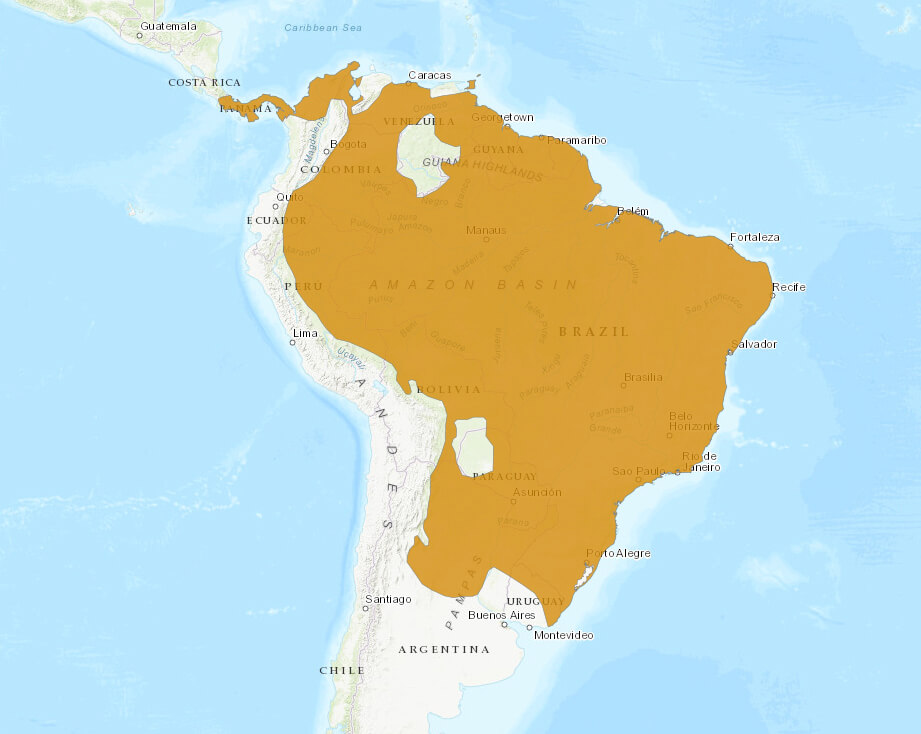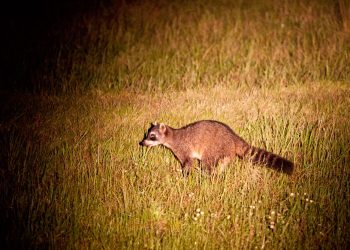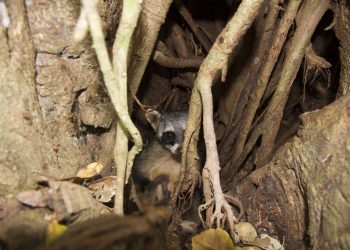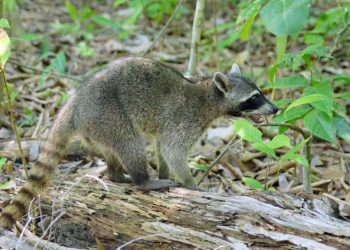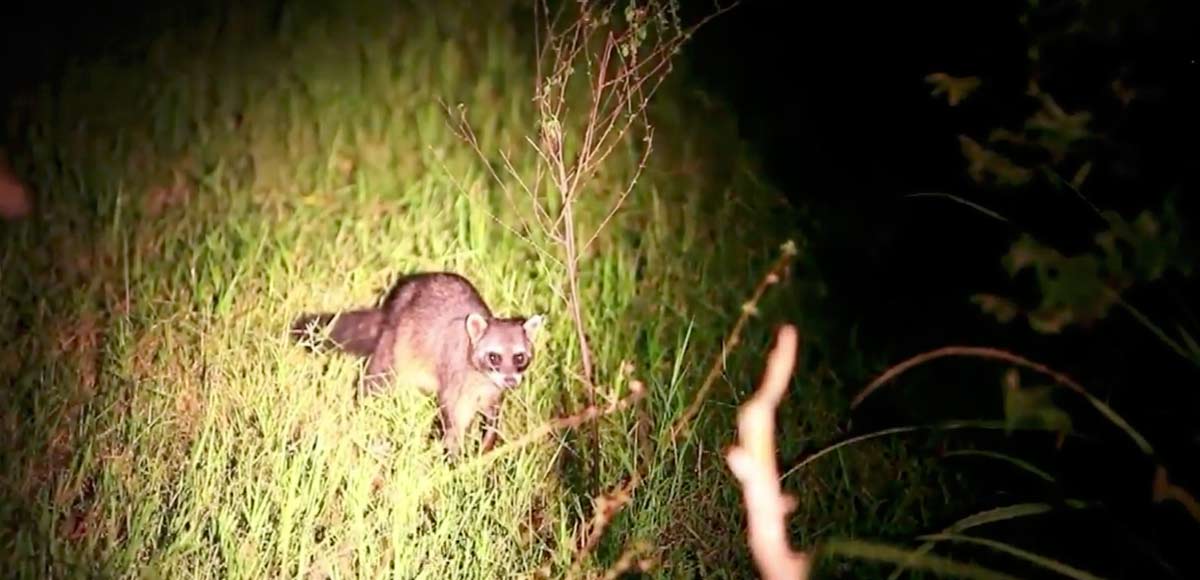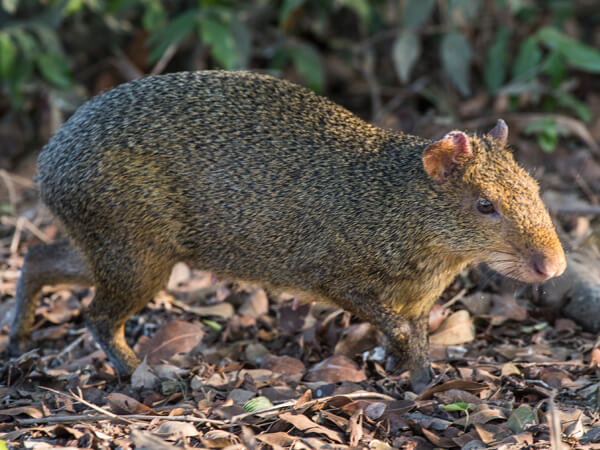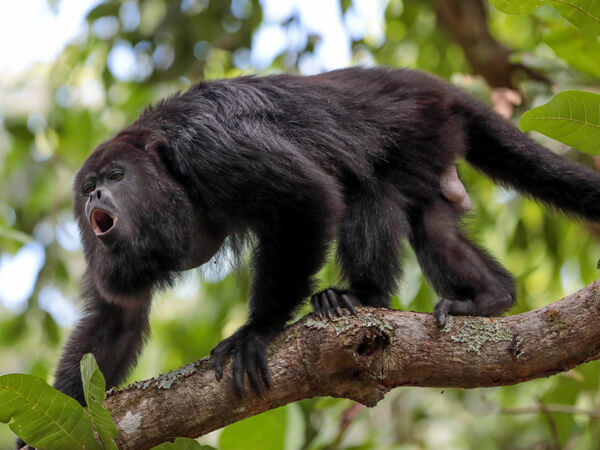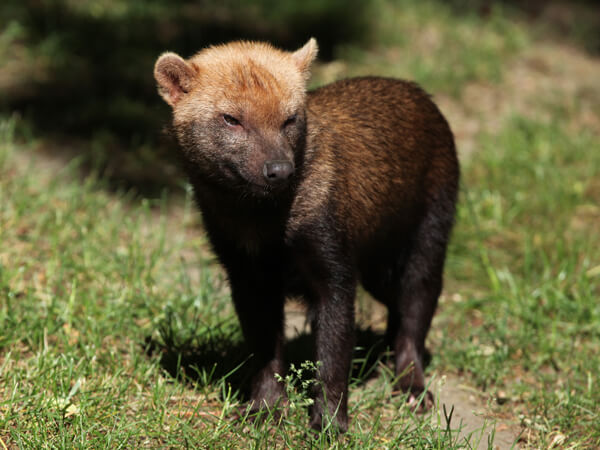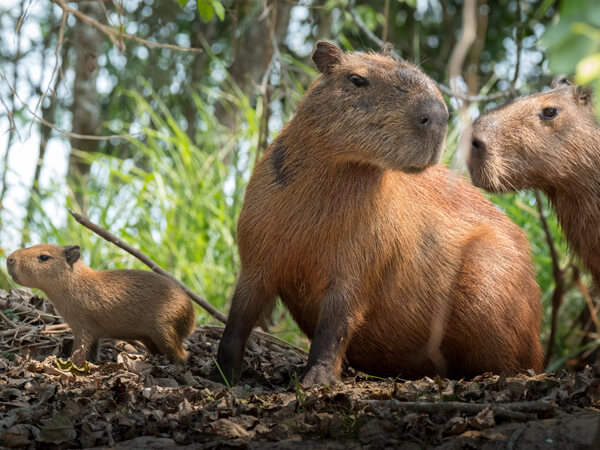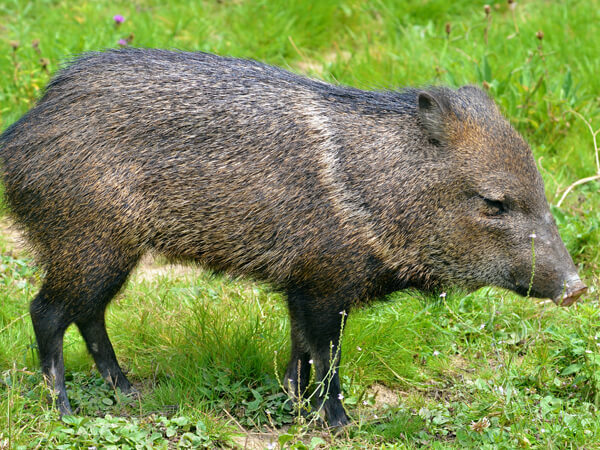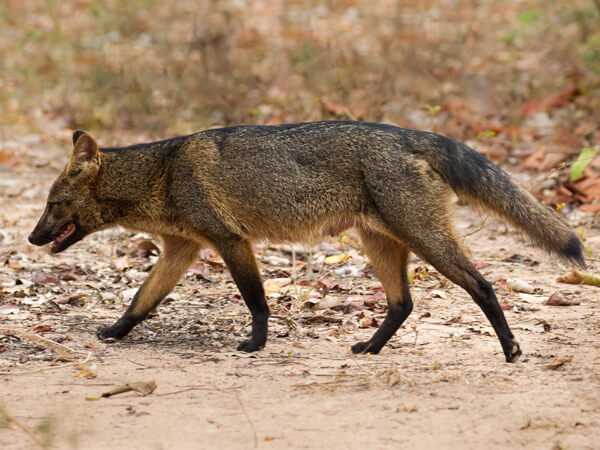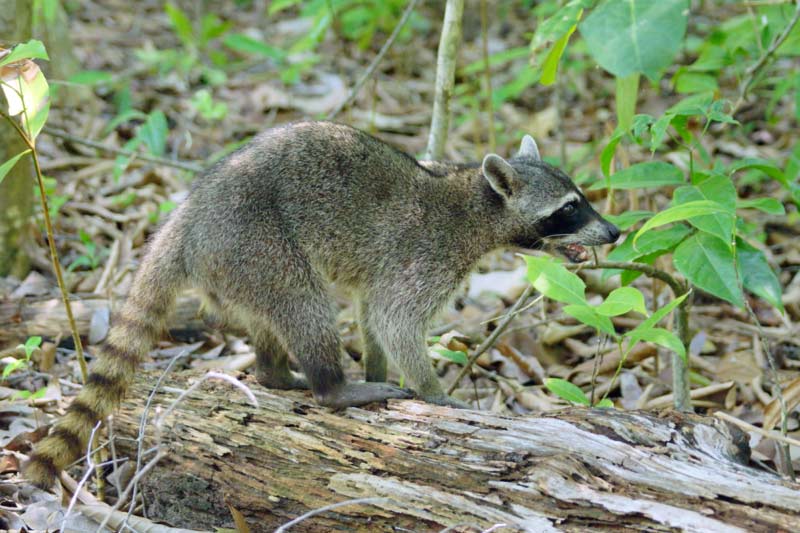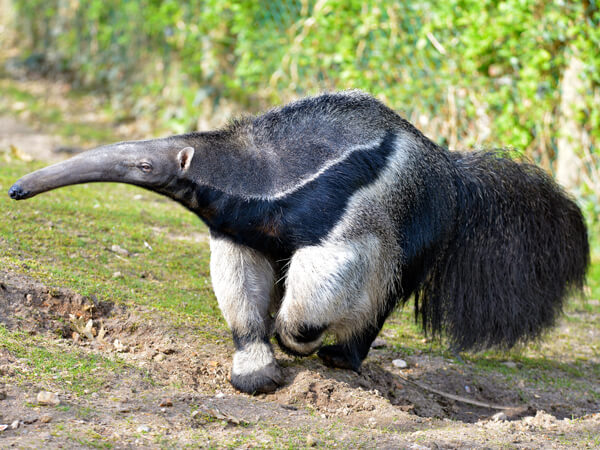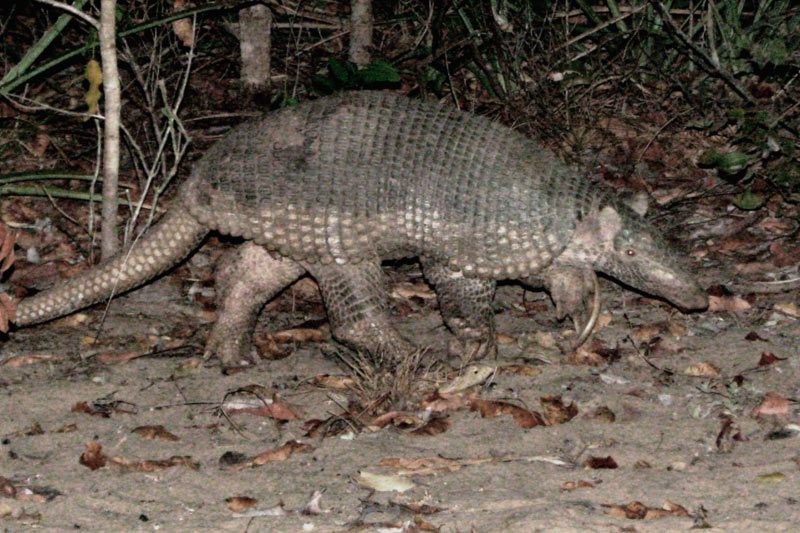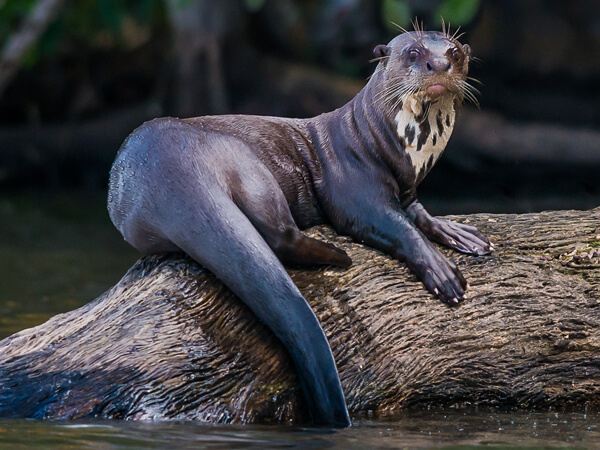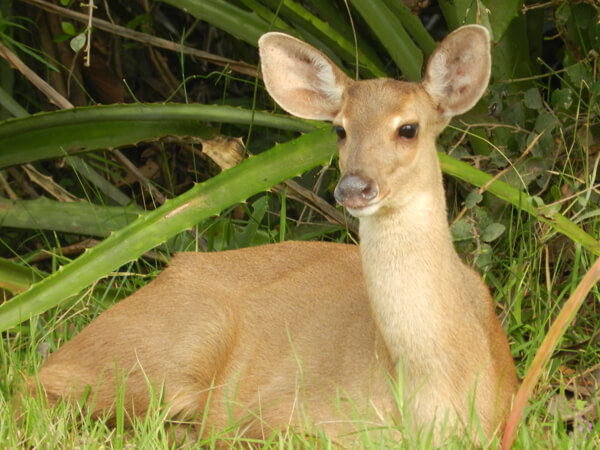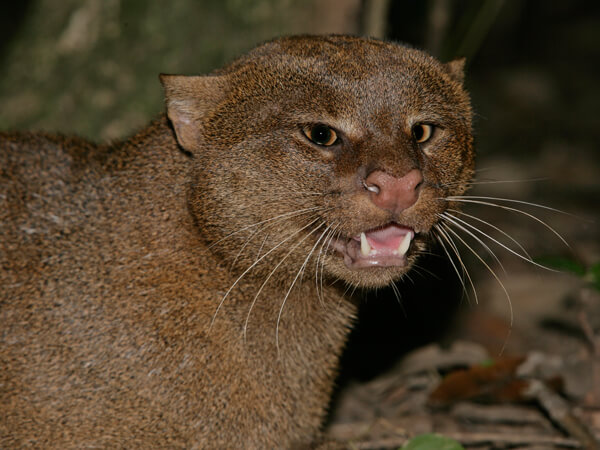É muito parecido com o guaxinim norte-americano (Procyon lotor), seu primo mais famoso.
Click to learn more
The crab-eating raccoon is very similar to the North American raccoon (Procyon lotor), its most famous cousin. In Portuguese, one of its famous names is “bare hand” due to the absence of hair on the animal’s hands. Procyon comes from the Latin and it means “dog predecessor”, while Cancrivorus means “eater of crabs”.
Distribution
The crab-eating raccoon is found in large quantities from Costa Rica to the south of South America, present in almost all countries of the continent, all the way to the east of the Andes. In Brazil, it occurs in almost all the national territory, in all biomes.
Features
The crab-eating raccoon measures approximately 60 centimeters in body length, with a tail ranging between 28 and 35 centimeters. It weighs between three to eight kilograms, with a dense, very short coat that is grayish, almost black, in color. The crab-eating raccoon has the appearance of a black “mask” around the face, with black rings on the tail. Legs are short, with long digits, and the species has short rounded ears, with a pointed snout.
Behavior
Due to lack of studies, little is known about the habits of the crab-eating raccoon. It is a nocturnal animal, usually associated with bodies of water. With its very highly developed sense of touch, the animal uses its front paws (hands) for many activities, including searching and capturing crustaceans, manipulating food and then taking the food to its mouth, in a manner similar to the behavior of monkeys.
Food
The crab-eating raccoon is omnivorous, feeding mainly on crustaceans, as well as fruits, insects, small reptiles, amphibians and small mammals.
Reproduction
The gestation period lasts around 64 days, after which females give birth to one or two cubs. The mother keeps the cubs housed in hollows within trees until they are approximately seven to nine weeks old, at which time they begin to accompany their mother on hunts.
Conservation
The crab-eating raccoon has been listed as “least concern” by both the national list of ICMBio and by the IUCN.
Threats
It is an animal predominantly hunted for its fur, and also struggles with the loss of habitats.

